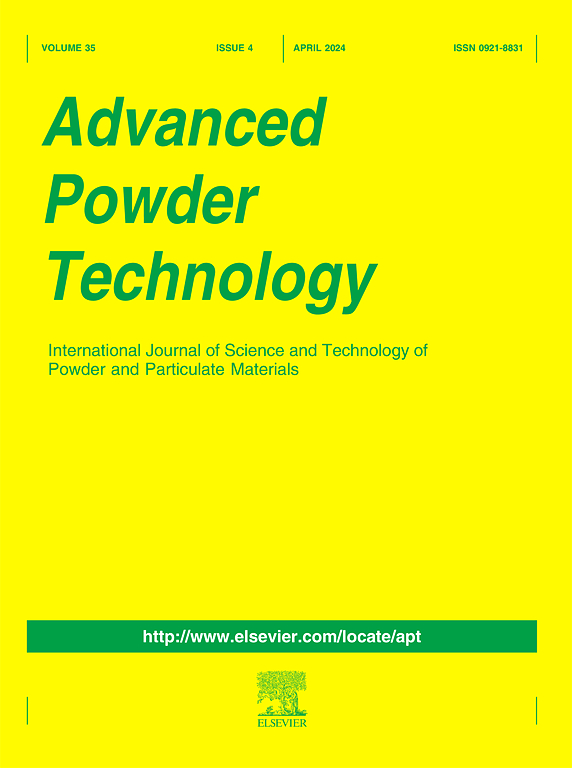An iterative scheme for nonlinear collision-induced breakage equation and convergence analysis
IF 4.2
2区 工程技术
Q2 ENGINEERING, CHEMICAL
引用次数: 0
Abstract
The particulate process (Population balance equation (PBE)) has significant applications in milling processes, astrophysics, and the formation of raindrops. A novel PBE is presented, where particle collisions result in one particle fragmenting into multiple pieces (two or more) due to the impact of elastic collisions. This article aspires to offer a semi-analytical solution of a nonlinear collision-induced breakage equation (CBE) using the Temimi and Ansari method (TAM). Firstly, we describe the contraction mapping theorem for the local existence of the solution to CBE. Then, the convergence analysis of the TAM iterative solution is exhibited under some physical assumptions on the collision kernels. In addition to this, the maximum error bound is calculated for the finite term truncated solution. In order to show the accuracy and efficiency of the proposed method, we have numerically simulated the finite-term approximate density functions and moments with the available analytical results at various time stages considering several numerical examples. In all numerical cases, TAM yields closed-form solutions for the zeroth and first moments. Furthermore, it is noted that the TAM consumes less computing time despite producing results with precision comparable to the Homotopy Perturbation method [1]. Finally, it has been shown that the proposed method provides the first-order convergence rate.

非线性碰撞断裂方程的迭代格式及收敛性分析
微粒过程(种群平衡方程(PBE))在铣削过程、天体物理学和雨滴的形成中具有重要的应用。提出了一种新的粒子碰撞模型,其中粒子碰撞导致一个粒子由于弹性碰撞的冲击而分裂成多个碎片(两个或更多)。本文试图用Temimi和Ansari方法(TAM)给出非线性碰撞破裂方程(CBE)的半解析解。首先,给出了CBE解的局部存在性的收缩映射定理。然后,在碰撞核的某些物理假设下,给出了TAM迭代解的收敛性分析。除此之外,还计算了有限项截断解的最大误差界。为了证明所提方法的准确性和效率,我们结合几个数值算例,用现有的解析结果对不同时间阶段的有限项近似密度函数和矩进行了数值模拟。在所有的数值情况下,TAM给出了零阶和一阶矩的闭型解。此外,值得注意的是,尽管TAM产生的结果精度与同伦摄动方法[1]相当,但它消耗的计算时间更少。最后,证明了该方法具有一阶收敛速度。
本文章由计算机程序翻译,如有差异,请以英文原文为准。
求助全文
约1分钟内获得全文
求助全文
来源期刊

Advanced Powder Technology
工程技术-工程:化工
CiteScore
9.50
自引率
7.70%
发文量
424
审稿时长
55 days
期刊介绍:
The aim of Advanced Powder Technology is to meet the demand for an international journal that integrates all aspects of science and technology research on powder and particulate materials. The journal fulfills this purpose by publishing original research papers, rapid communications, reviews, and translated articles by prominent researchers worldwide.
The editorial work of Advanced Powder Technology, which was founded as the International Journal of the Society of Powder Technology, Japan, is now shared by distinguished board members, who operate in a unique framework designed to respond to the increasing global demand for articles on not only powder and particles, but also on various materials produced from them.
Advanced Powder Technology covers various areas, but a discussion of powder and particles is required in articles. Topics include: Production of powder and particulate materials in gases and liquids(nanoparticles, fine ceramics, pharmaceuticals, novel functional materials, etc.); Aerosol and colloidal processing; Powder and particle characterization; Dynamics and phenomena; Calculation and simulation (CFD, DEM, Monte Carlo method, population balance, etc.); Measurement and control of powder processes; Particle modification; Comminution; Powder handling and operations (storage, transport, granulation, separation, fluidization, etc.)
 求助内容:
求助内容: 应助结果提醒方式:
应助结果提醒方式:


